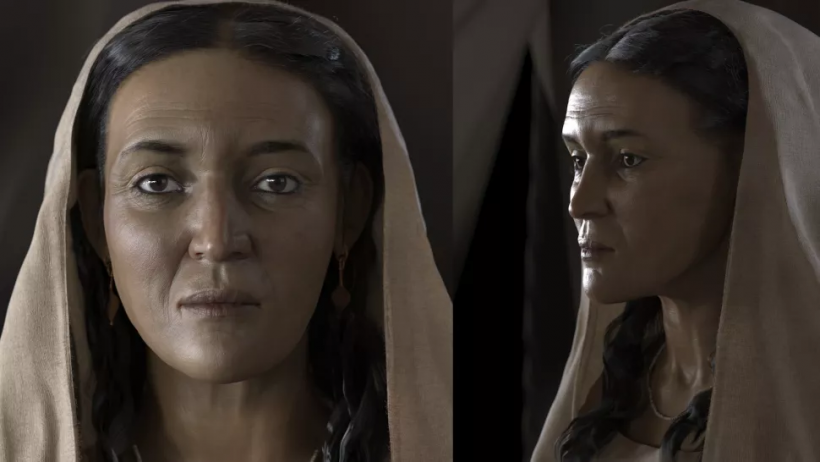A group of researchers from Saudi Arabia has revealed the facial reconstruction of a Nabataean woman who was buried along with 80 other skeletons in a 2,000-year-old tomb located at Hegra, which is a UNESCO World Heritage site in the ancient city of AlUla. The woman's skeleton was discovered by archaeologists in 2015, and they named her Hinat after finding an inscription about her on the tomb's façade.
After conducting further analysis of the remains, they determined that she lived to be between 40 and 50 years old, was approximately 5 feet and 3 inches (1.6 meters) tall, and was of "medium social status," as evidenced by her burial, according to a report by National Geographic.
Hinat: Ancient Nabataean Woman?
According to LiveScience, to create facial reconstruction, a team of experts from around the world pooled their knowledge of forensics and paleopathology (the study of diseases in ancient people). They utilized computerized tomography (CT) scans and a 3D printer to fashion a silicone model of a woman with dark characteristics, and whose hair was partially covered with a scarf.
This undertaking represents the initial instance in which a facial approximation has been constructed of a woman belonging to the Nabataean civilization, an ancient Arab group that rose to prominence during the 6th century BCE. Hinat and her people resided along the Incense Trade Route, which connected South Arabia to the Mediterranean Sea, where they displayed their remarkable international trading abilities. Nevertheless, there is limited historical documentation regarding the Nabataeans, as indicated by a declaration from the AlUla Royal Commission.
According to the project's director, archaeologist Laila Nehmé, the Nabataeans remain a relatively enigmatic group. Although much insight into their civilization has been gained, the lack of surviving literary texts or records still hinders people's knowledge of this group. Nehmé conveyed to National Geographic that uncovering this tomb provided an exceptional opportunity to broaden understanding of the Nabataean concept of the afterlife.

A facial approximation of Hinat, a Nabataean woman.
ALSO READ: Ancient Civilization Flourished in the Desert Thanks to Bird Droppings
Ancient Arab Civilization
Because of the absence of written or genetic documentation, there were certain creative liberties taken by researchers in the process of reconstructing Hinat's appearance. By utilizing archaeological evidence, they were able to develop a more nuanced comprehension of the fashion styles that women from that era and civilization likely wore. For instance, shreds of fabric discovered in her burial served as a reference point for her apparel, as indicated in the statement. Nonetheless, some external specialists have raised doubts regarding the reconstruction's authenticity.
Laurence Hapiot, an archaeologist at the King Abdullah University of Science and Technology in Saudi Arabia, tweeted to CNN: "There is still some non-scientific interpretation in facial reconstruction." Hinat's reconstructed face can be viewed at the Hegra Welcome Center in AlUla.
The Nabataean civilization was an ancient Arab civilization that emerged in the 6th century BCE and gained prominence during the Hellenistic period. The Nabataeans were known for their exceptional skills in international trade and established a vast network of trade routes, with their most famous being the Incense Trade Route that connected South Arabia to the Mediterranean Sea. They also developed an advanced system of water management and created magnificent rock-cut architecture, including the city of Petra, which is now a UNESCO World Heritage site. Despite their significant contributions to history, there is still much that is unknown about the Nabataean civilization due to the scarcity of written records and the lack of surviving physical structures.
RELATED ARTICLE: Extinct Pathogens That Afflicted Human Civilization Responsible for Diseases in Ancient History [Study]
Check out more news and information on Archeology on Science Times.




![Aspirin Supports Immune System in Detecting and Targeting Cancer [Study]](https://1721181113.rsc.cdn77.org/data/thumbs/full/53271/89/56/50/40/aspirin-supports-immune-system-in-detecting-and-targeting-cancer-study.jpg)









